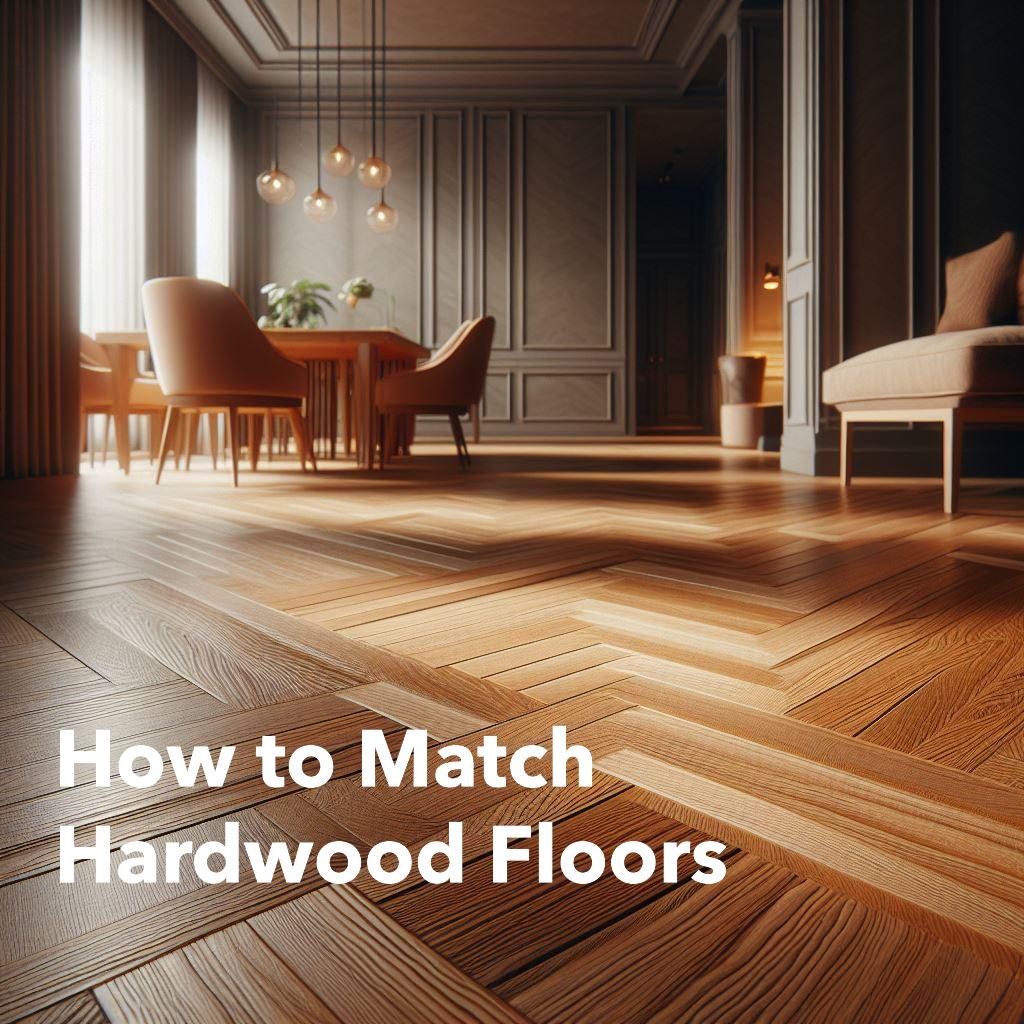When it comes to creating a cohesive look in your home, matching hardwood floors is a common challenge many homeowners face. Whether you’re extending your flooring into another room or repairing damaged areas, ensuring a seamless transition between old and new hardwood floors is key to a polished and inviting space.
The task of matching hardwood floors may seem daunting, but with the right approach, it can be a straightforward process. This article will guide you through the essential steps to match your hardwood floors perfectly, from selecting the right wood species to understanding the importance of grain patterns and finishes.
By the end of this guide, you’ll be equipped with the knowledge to make informed decisions for a harmonious hardwood floor that enhances the beauty and value of your home. So, let’s dive into the world of hardwood flooring and discover how to create that flawless match.
Understanding Wood Species and Varieties
One of the first steps in matching hardwood floors is identifying the wood species of your existing flooring. Hardwood floors come in various species, each with unique characteristics, colors, and grain patterns. Popular choices include oak, maple, cherry, and walnut, among others.
It’s crucial to match the new wood to the species of your existing floors to ensure consistency in appearance. If an exact match isn’t possible, consider choosing a complementary species that can mimic the look of your original floors when stained and finished similarly.
Keep in mind that even within the same species, there can be variations in color and grain due to the natural growth patterns of the wood. These variations can add character to your floors, but they can also make the matching process more complex.
To navigate these challenges, work with a knowledgeable flooring specialist who can help you find the best match or alternative for your specific situation. They can provide samples and advice on how to achieve the closest match possible.
Matching Grain Patterns and Board Widths
Grain patterns play a significant role in the overall look of hardwood floors. When matching new boards to existing flooring, it’s important to consider the grain orientation and pattern. Boards with similar grain patterns will blend more seamlessly, creating a uniform appearance.
Board width is another factor to consider. Older homes often have wider plank floors, while modern flooring tends to be narrower. Matching the width of your new boards to the existing ones will help maintain the flow and integrity of the flooring design.
If you’re unable to find boards with an exact width match, consider using transition strips or borders to create a deliberate distinction between the two areas. This design choice can turn a potential mismatch into a feature that adds character to your home.
Remember, the goal is to achieve a match that looks intentional and well-thought-out, even if it’s not an exact replica of the original flooring. Sometimes, embracing the differences can lead to a more interesting and dynamic space.
Finishing Touches: Stains and Finishes
The final step in matching hardwood floors is selecting the right stain and finish. The finish not only protects your floors but also plays a major role in the final color and sheen of the wood.
When choosing a stain, it’s essential to test it on a sample piece of the same wood species. Wood can absorb stain differently, and the color can vary significantly from one species to another. Testing ensures that you’ll achieve the desired result on your actual floors.
Consider the age and condition of your existing floors when selecting a finish. Older floors may have a patina that new floors lack. Using a finish with a similar sheen can help bridge the gap between old and new, making the match more convincing.
If you’re working with a professional, they can custom-mix stains and finishes to create the perfect match. They can also advise on the best type of finish for your lifestyle, whether it’s a high-gloss for a dramatic effect or a matte finish for a more natural look.
In conclusion, matching hardwood floors is an art that requires attention to detail and an understanding of the materials involved. By considering the wood species, grain patterns, board widths, and finishes, you can achieve a beautiful and cohesive flooring transition in your home.
Remember that slight variations can add character and depth to your floors. With patience and the right approach, you can create a match that feels intentional and enhances the overall aesthetic of your space.










